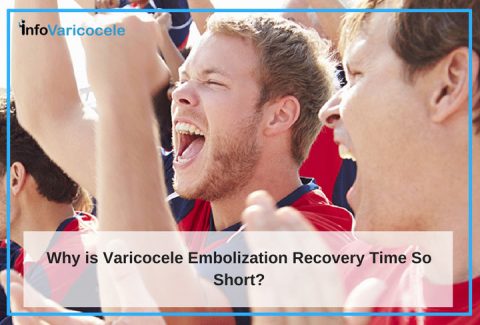
It’s not all that uncommon for men to receive a varicocele diagnosis — statistics indicate that 15% of all men have a varicocelei. Men with this condition sometimes suffer pain and discomfort. They may notice a testicle that appears smaller than usual, and/or more visible scrotal veins. Doctors and researchers have linked varicocele to male factor infertility. Varicocele may be something you feel awkward talking to your doctor about, but a conversation is necessary. The good news is a minimally invasive procedure called Varicocele Embolization can treat varicocele without surgery.
What Is Varicocele Embolization?
Varicocele embolization is an outpatient procedure with a short recovery time. During the procedure the doctor makes a small nick in the skin, (usually in the groin). A small catheter is threaded through the nick and into a vein in the groin. Metal coils are inserted into the catheter and then into the varicose veins of the varicocele. This essentially blocks off the affected veins and causes a redirection of blood flow back to the circulatory system via an alternate pathway through healthy veins.
9 Things About Varicocele Embolization You May Not Know
As an alternative to surgery, there is a minimally invasive procedure known as Varicocele Embolization. Here are 9 things you should know before deciding if varicocele embolization right for you:
- Embolization is a non-surgical procedure performed by an interventional radiologist in an outpatient setting. You will be attached to heart and lung monitoring equipment to assess your condition throughout the procedure.
- Typically the varicocele embolization procedure takes about an hour to complete.
- Embolization leaves no permanent scarring. It involves only a nick to the skin in the groin area in order to insert a small catheter.
- After the catheter is inserted into the affected vein the doctor will inject a dye to identify the malfunctioning veins on x-rays during the procedure. Once the correct veins are visualized, small metal coils and/or a sclerosing solution are advanced through the catheter into the dysfunctional vein to block off the flow of blood.
- Pain is minimal. The radiologist may offer you local anesthesia and/or a mild sedative. Some opt for no anesthesia or sedation during the procedure and do well. You may experience the sensation of pressure when the radiologist inserts the catheter, but generally men who undergo this procedure report no significant pain or discomfort.ii
- Healthy veins take over blood flow almost immediately. Once the dysfunctional veins are closed off, the blood flow is re-routed to other healthy veins, which restores normal circulation.
- Pain relief occurs quickly after the procedure. For those suffering from discomfort associated with varicocele, this is an enormous benefit.
- Recovery time is much shorter after embolization than it is after surgery. Surgical options require a 1 – 2 week recovery period for normal lifestyle activities and a 4-week recovery period to resume sex. Recovery after varicocele embolization is typically 1 – 2 days. The resumption of sexual activity after embolization is anywhere between 2 days to 2 weeks depending upon your physicians recommendation.
- Varicocele Embolization is covered by most insurance plans. It is recommended that you discuss the cost of varicocele embolization during your visit.
Men who are considering treatment of varicocele should know that surgery isn’t the only treatment option available. Embolization is a good alternative to varicocele surgery for several reasons. It avoids the incision and stitches of surgery, there is a shorter recovery time, less pain, and a lower risk of complications. It’s important to research and gather all the information available about Varicocele Treatment Options before making a final decision about which treatment plan is right for you.
Sources:
i http://www.ncbi.nlm.nih.gov/pmc/articles/PMC4164550/
ii http://www.radiologyinfo.org/en/info.cfm?pg=Varicocele


